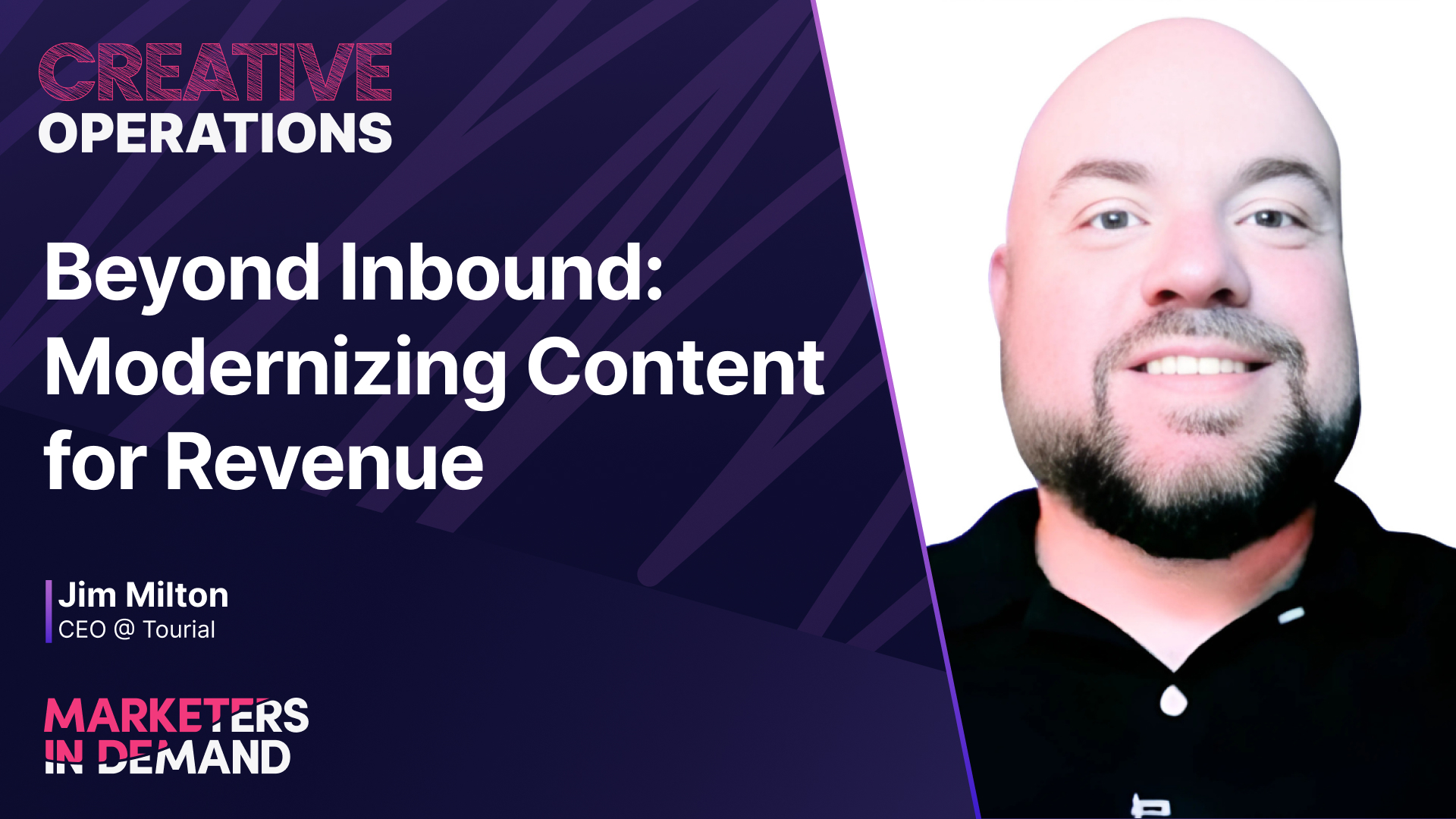On this episode of Content Logistics, host Baylee Gunnell chats with guest Melissa Popp, Content Marketing Strategist at RicketyRoo Inc., about navigating content strategy with limited budgets. They delve into the common challenges faced by companies of all sizes, from startups to established businesses, when resources are tight. Melissa emphasizes the importance of maximizing the impact of every marketing dollar, particularly for small and medium-sized businesses. She advocates for prioritizing marketing efforts based on potential revenue generation and a laser focus on what truly moves the needle for clients.
Challenging conventional wisdom, Melissa suggests that content creation might not always be the first marketing investment. Instead, she proposes exploring alternative strategies like paid advertising to generate initial revenue, which can then be strategically reinvested in content development. This approach empowers businesses to establish a stable financial footing before diving headfirst into content, ensuring that the content created aligns seamlessly with overall marketing objectives.
Beyond budget allocation, the conversation also explores effective content distribution strategies. Melissa underscores the vital importance of understanding your target audience and tailoring your content accordingly. She also highlights the power of repurposing content across various platforms to maximize reach and engagement. Finally, Baylee and Melissa discuss the often-overlooked significance of reverse engineering the sales funnel, starting with optimizing bottom-of-the-funnel content. They also caution against the allure of “vanity metrics” like website traffic, emphasizing the true measure of content success lies in conversions and leads.
Featured Guest

💡Host: Melissa Popp
💡What they do: RicketyRoo Inc.
💡Company: Melissa Popp
💡Noteworthy: 20+ years in content marketing, specializes in scrappy, ROI-driven strategies
Featured Guest
Key Insights
Prioritize Paid Advertising Before Content Creation (Sometimes)
When budgets are tight, content creation shouldn’t always be the first marketing investment. Instead, focus on revenue-generating activities like paid advertising. Once you have a revenue stream, reinvest those profits into content creation. This counterintuitive approach allows you to build a strong foundation and prioritize content aligned with your business goals. By focusing on ROI from the start, you ensure that your content efforts contribute directly to business growth, rather than draining limited resources. This strategy is particularly relevant for smaller businesses or startups where every dollar counts.
Reverse Engineer Your Content Funnel
Begin with your bottom-of-funnel content, the place where conversions happen. Ensure this content is compelling, user-friendly, and optimized for conversions. Work your way up the funnel, creating middle-of-funnel content that addresses customer objections and guides them towards the bottom of the funnel. Lastly, create top-of-funnel content that draws your target audience in. This approach ensures a seamless customer journey, maximizing your chances of converting leads into paying customers.
Distribution is Just as Important as Content Creation
Creating great content is only half the battle. Understanding your target audience and where they consume information is crucial for effective distribution. Don’t waste time and resources spreading your message thinly across every platform. Instead, focus on the channels where your audience is most active. Tools like Hootsuite and Buffer can help you schedule and manage content efficiently, even with limited resources. By prioritizing strategic distribution, you’ll ensure your content reaches the right people, maximizing its impact.
Look Beyond Vanity Metrics
High website traffic can be misleading. While impressive, it doesn’t necessarily translate into business success. Instead of focusing on vanity metrics, prioritize conversions and leads. Track the percentage of traffic that converts into paying customers and calculate the lifetime value of each customer. This data-driven approach provides a more accurate picture of your content’s effectiveness. By focusing on metrics that directly impact your bottom line, you ensure that your content efforts contribute to tangible business growth.
Episode Highlights
The Importance of Client Communication
Baylee and Melissa discuss the different types of companies that may need to approach content marketing with budget constraints in mind. They emphasize the importance of understanding the client’s current situation, marketing spend, and overall goals. Melissa describes working with businesses of all sizes and stages, from day one startups playing catch-up to established businesses looking to revamp their marketing strategies. Open communication and a tailored approach are crucial for successful content marketing partnerships.
“It really is, where is the business at? Have they spent marketing dollars already? Have they spent the right marketing dollars? It really goes business to business and what that situation is.”
Repurposing Content with AI
The conversation shifts to content repurposing and leveraging AI tools like ChatGPT. Baylee highlights the versatility of a single blog post, explaining how it can be repackaged into various formats for different platforms. Melissa shares her enthusiasm for AI, particularly ChatGPT’s image update, and its potential for creating memes and other visual content. She suggests using AI tools to generate social media posts and other content variations from a single source, saving time and resources while maximizing reach.
“You take that one piece of content and say, ‘Hey, can you create 10 Facebook posts about this content? I want to reach out to my professional network on LinkedIn. How do we repurpose this for a LinkedIn post?’”
Fuzzy Call to Actions and Contact Page Optimization
Baylee and Melissa discuss common issues with call to actions and contact pages, emphasizing the need for clarity and conciseness. Baylee points out that generic calls to action and unclear contact information can deter potential clients. Melissa agrees, highlighting how often contact pages are neglected despite being crucial for lead generation. She stresses the importance of specifying response times and managing client expectations to build trust.
“Contact pages are probably one of the least worked on pages on a website. Everybody builds one. They put a form on every page, and then they have a contact page. If someone goes to that contact page and all they see is a Google Map embed with four addresses, what happens when you submit the form?”
Multichannel Marketing in the Age of AI Overviews
Baylee and Melissa discuss the rise of AI-generated overviews in search results and the impact on traditional SEO strategies. Baylee expresses concern about the trend towards “zero-click content” where users find information directly within the search results, reducing website visits. Melissa agrees, acknowledging the shift and emphasizing the need for multichannel marketing strategies. She encourages clients to diversify their marketing efforts and explore alternative channels like paid social and even direct mail to reach their target audience.
“We have to be encouraging clients that they need to be looking at where their audience is, whether it’s paid, social. I’ve worked with businesses that still do direct mail. Because their audience is still there, that still works.”










